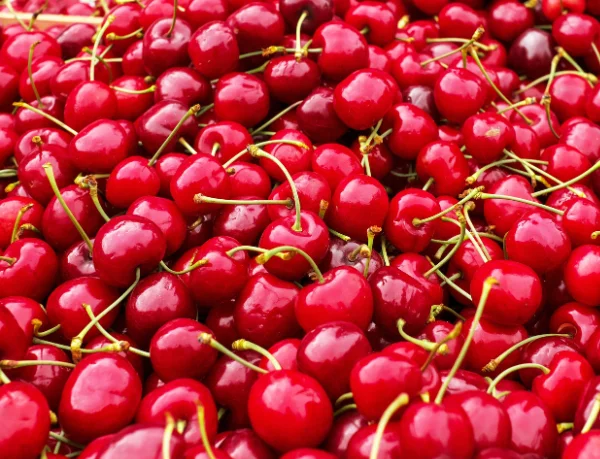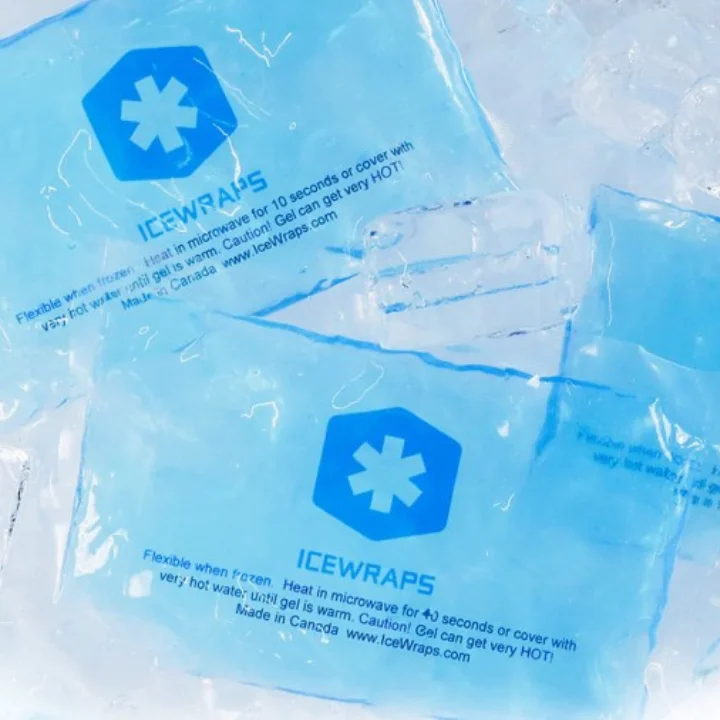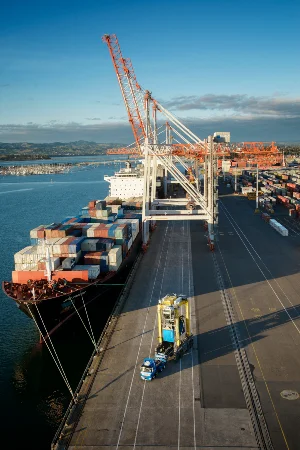- 20 May 2025
Importance of Cold Chain Logistics
Australia's abundant natural resources and favorable climate creates an optimal setting for cultivating a wide array of premium food products, ranging from fruits, nuts and vegetables to dairy, seafood and livestock. As a result, agriculture is a key industry in Australia, occupying a staggering 55% of the country's landmass, as highlighted by the Department of Agriculture, Fisheries and Forestry.
Australia's agricultural capabilities has positioned the country as a major player in global food exports. In the fiscal year 2022-2023, Australia's exports in the agricultural, fisheries, and forestry sectors surged to a record-breaking $80 billion. Notably, the grains, oilseeds and pulses segment stand out as the fastest-growing export category, with an impressive average annual growth rate of 11%. The substantial export of $345.2 million worth of fruits to China in 2023 emphasises the importance that international trade plays in propelling Australia's agricultural achievements.
Yet, to maintain consistent supply and satisfy year-round demand, Australia also needs to import a wide variety of food products into the country every year. Seafood, fresh fruit and vegetables, soft drinks, confectionary and oils make up most of the food importation in Australia.
We understand the importance of agriculture and perishable foods to the economy and our livelihood but what goes into the importation and exportation of perishable freight?

What is perishable freight?
Perishable goods are products with a limited shelf life that can spoil if not handled properly during transport. They require specialised transportation methods to maintain their freshness and quality. Examples include fresh produce, dairy items, seafood, flowers and pharmaceuticals, which are sensitive to temperature, humidity and handling.
To successfully transport perishable goods globally, you need a logistics provider who can safely navigate your products through the cold chain from origin to destination. This involves considering storage, transit times, temperature conditions, relevant regulations and the modes of transport to be used. The cold chain process is crucial for preserving quality, preventing spoilage and extending the shelf life of these goods.
What is cold chain?
The process is a temperature-controlled system that ensures freight is held at a constant set temperature from source to destination. A cold chain is a supply chain that deals with perishable, temperature-sensitive goods.
Timing and temperature are the crucial factors when handling fresh produce as it deteriorates with time, depending on the temperature of storage. Most refrigerated, chilled and fresh produce is stored and transported at temperatures between -1.5ºC and +4ºC, varying on product type. For most frozen goods, storage temperatures are at -18ºC or below which prolongs shelf life by a considerable amount, making transportation substantially easier. Goods such as flowers, fruit and vegetables are trickier to transport due to being extremely sensitive to temperature changes.
Cold chain terms and definitions
• Cold chain: An uninterrupted flow of a temperature-controlled zones throughout the production, storage and handling of temperature-sensitive products.
• Cold chain management: Development and implementation of appropriate processes in all stages of the cold chain, including products in transit, in process and in storage.
• Cold chain product: A temperature-sensitive product.
• Perishable: Goods that will decay over a given period or if exposed to detrimental temperature, humidity or other sub-optimal environmental conditions.
• Reefer: A transport container that uses an electric or combustion motor to maintain temperature.
• Shelf life: The amount of time that a product maintains its freshness.
Types of coolants
When transporting perishables, goods must be packaged with the appropriate coolant to reduce variation in temperature. The three common coolants used are:
• Gel packs: Packs that keep perishable freight cold between 1ºC and 10ºC.
• Dry ice: Dry ice is frozen CO2 that changes from a solid to gas without ever going through a liquid state. It is primarily used for freezing or keeping items frozen due to its extremely cold temperature of -78.5ºC.
• Wet ice: Wet ice is essentially frozen water. This method of coolant is considered acceptable for short lengths of transportation but requires additional waterproof liners and packaging to prevent leakage.

Dry Ice

Gel Packs

Wet Ice

Air Freight
Temperature control
One of the primary challenges in transporting perishable goods by air is maintaining the right temperature throughout the journey. Airfreight shipments often involve multiple touchpoints, including warehouse storage, ground transportation and aircraft storage, where temperature conditions can fluctuate.
To overcome this challenge, dry ice is utilised to keep freight at a consistent temperature. The freight is packed and transported with temperature monitoring and control systems to track variance in temperature.
Speed
The advantage of air freight for perishable goods is its speed. However, this speed is only beneficial if the entire logistics chain is optimised for efficiency. Delays at any stage of the journey, whether in transit, during customs clearance, or at the destination, can impact the freshness and quality of perishable goods.
In order to ensure speed and prevent delays, a streamlined documentation, pre-clearance and tracking system is important.
Regulatory compliance
The transportation of perishable goods involves adherence to regulations and standards of the origin and destination country. Different countries may have specific requirements for the transportation of certain perishable products, such as vaccines, pharmaceuticals, or specific food items. Non-compliance with these regulations can lead to delays, fines and/or rejection.
To avoid non-compliance consequences, it is essential to be informed about the proper guidelines and obtain the necessary documentation.

Sea Freight
Temperature control
Sea freight refrigerated containers (reefers) can maintain a consistent temperature throughout the entire journey, from departure to destination. Reefer containers are connected to an electric power supply that allows the container to maintain its temperature. These containers can withstand severe external weather and offer temperatures within the container ranging from -35ºC to as high as 35ºC.
Intermodal shipping
Reefer containers offer the flexibility of intermodal transportation as they can be moved by all means of transportation, e.g. sea, road or rail. This means that goods maintain a constant temperature no matter how they are transported.
Cost-effective
The advantage of container shipping is the ability to consolidate shipments and send various quantities at once. Shipping containers come in sizes of 20ft and 40ft, catering to consumer inventory needs for storing and transporting.
Mainfreight’s Penguins to Paris Project
The Auckland airfreight team took on the challenging project for Merlin Entertainment Group, UK: transporting six live King Penguins from Sea Life Kelly Tarlton’s Aquarium in Auckland to Sea Life Paris Aquarium. The team had successfully transported various live animals in the past but learnt very quickly that this project would be particularly challenging. Despite experience with live animals, this project required securing transit permits from Australia, Singapore and the UAE, whilst also navigating the significant challenge of maintaining the transportation pod at a constant temperature of 2-4º C.
A Mainfreight team member, along with handlers from Melbourne Aquarium and Sea Life Kelly Tarlton’s Aquarium, accompanied the birds. After six months of planning, "Mission Happy Feet" arrived at Charles De Gaulle International Airport and proceeded to French Quarantine.
The penguins arrived safely at the Sea Life Paris Aquarium safely with minimal stress.

The Mainfreight difference
Mainfreight specialises in providing business-to-business Less than Container Load and Full Container Load logistics services encompassing sea freight, air freight, domestic freight, warehousing and customs clearance across all industries. Transporting fresh products worldwide demands specialised handling, precise temperature control and swift delivery to maximise shelf life. Recognising the unique demands of time-sensitive freight, our perishables team ensures peace of mind when importing and exporting perishable goods internationally.
We understand the importance of knowing the whereabouts and delivery timeline of your products. With our branches globally utilising the same advanced technology, your team can count on real-time data accuracy and visibility from anywhere in the world.
Our comprehensive customs brokerage services alleviate the complexities of importing and exporting perishables into the country and our streamlined quarantined services reduce turnaround time, furthering efficiency and speed of delivery. What sets us apart from competitors is our in-depth understanding of the required documentation and adherence to regulatory standards.
Mainfreight also offers end-to-end supply chain services, facilitating seamless transportation of your freight via road, sea, and air. This consolidated approach ensures full visibility of your freight movement and we understand the importance of constant temperature control to safeguard your perishables throughout the journey.
Learn more
Find out more about our Cold Chain and Perishables services!
Learn more